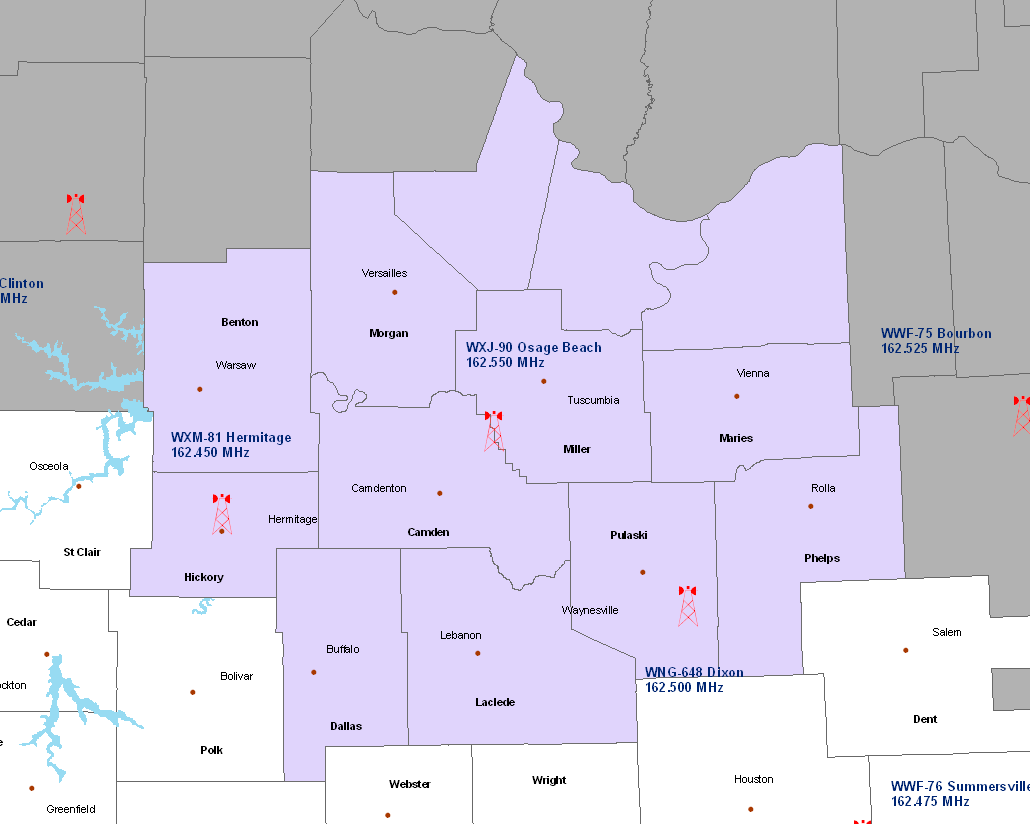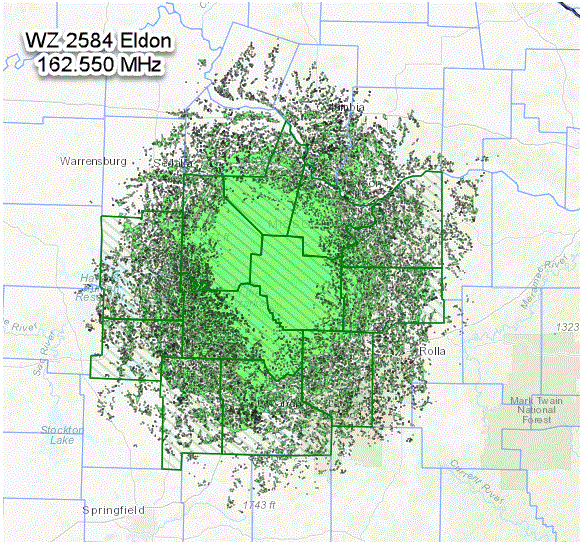
​Here is your National Weather Service forecast for Lake of the Ozarks
Tonight, partly cloudy during mid and late evening, then
becoming mostly clear. Lows in the upper 50s. Southeast winds
around 5 mph.
Thursday, mostly sunny. A chance of showers and thunderstorms in
the afternoon. Highs in the lower 80s. South winds 5 to 10 mph.
Chance of rain 50 percent.
Thursday Night, a chance of thunderstorms. Showers. Lows in the
lower 60s. South winds around 5 mph. Chance of rain 80 percent.
Friday, becoming partly sunny in the afternoon. A chance of
thunderstorms. Showers likely, mainly in the morning. Highs in
the mid 70s. West winds around 5 mph. Chance of rain 70 percent.
Friday Night, partly cloudy in the evening, then becoming mostly
cloudy. Lows in the lower 50s. North winds around 5 mph.
Saturday, partly sunny. Highs in the upper 60s.
Saturday Night, mostly cloudy. Lows in the mid 50s.
Sunday, mostly cloudy in the morning, then becoming partly sunny.
A 50 percent chance of showers. Highs in the mid 70s.
Sunday Night, mostly cloudy in the evening, then becoming partly
cloudy. Lows in the lower 60s.
Monday, mostly sunny. Warmer with highs in the mid 80s.
Monday Night, mostly cloudy with a chance of showers. A chance of
thunderstorms after midnight. Lows in the upper 60s. Chance of
rain 50 percent.
Tuesday, partly sunny with a chance of showers in the morning,
then mostly cloudy with showers likely with a chance of
thunderstorms in the afternoon. Highs in the upper 70s. Chance of
rain 60 percent.
Tuesday Night, showers likely, mainly in the evening. Cooler with
lows in the upper 50s. Chance of rain 60 percent.
Wednesday, partly sunny with a chance of showers. Highs in the
lower 70s. Chance of rain 50 percent.
​



FIPS Codes for your Programmable NOAA All Hazards Weather Radio
When severe weather occurs, the routine broadcasting will be interrupted to provide the listener with frequent updates on severe weather warnings or statements for your area. When a severe weather warning is issued and you are within 40 miles of the transmitter, a weather tone will alert on specially built receivers, with warning and safety information following directly after the tone. With the new Specific Area Message Encoder (SAME) weather radios, you can program your weather radio to only receive warnings for the county you program into the radio.
More information on NOAA All Hazards Weather Radio